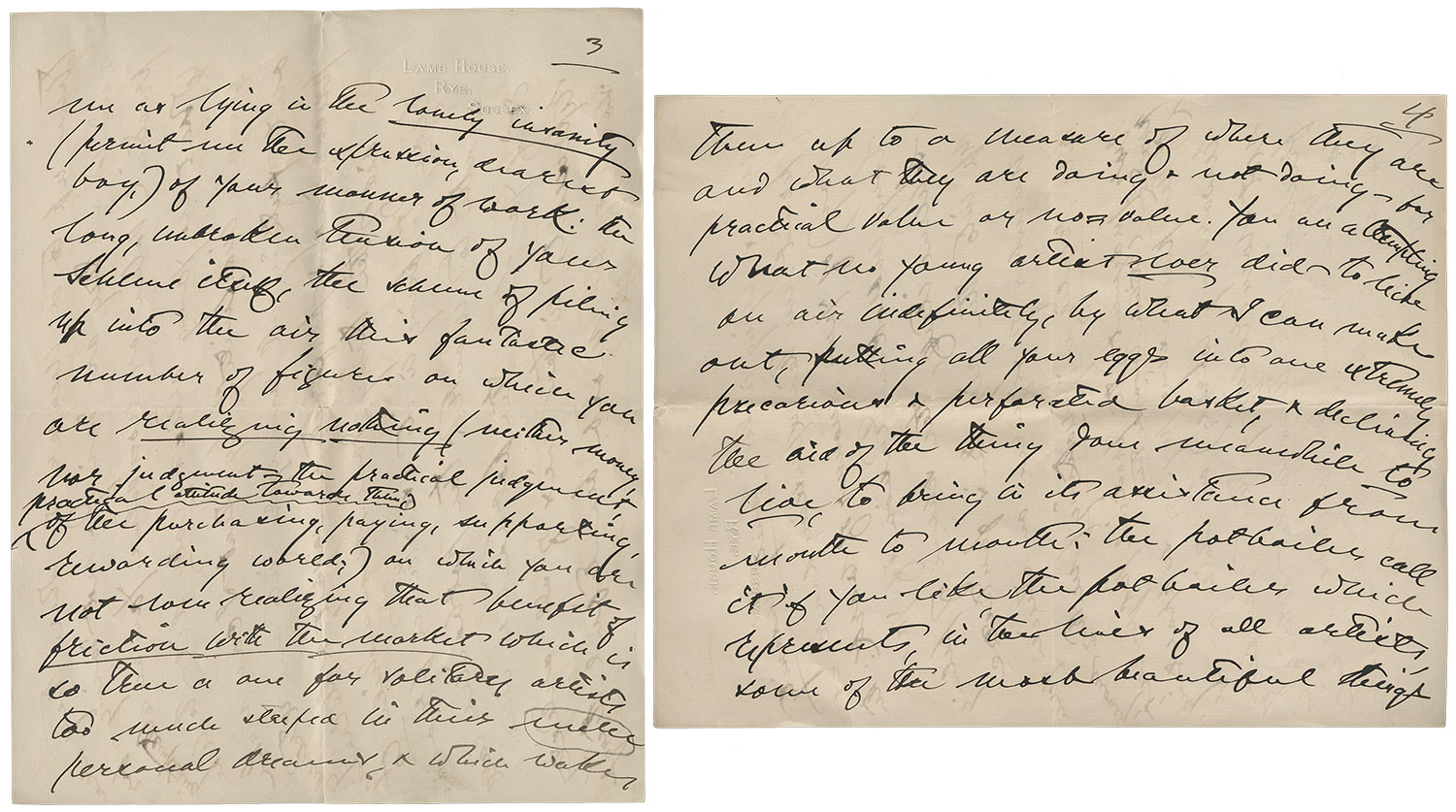 Henry James (1843–1916)
Henry James (1843–1916)
Autograph letter, signed, to Hendrik Christian Andersen, 25 November 1906
Henry James Papers, Albert and Shirley Small Collections Library, University of Virginia; MSS 6251 (46)
Between 1899, the year they met, and 1915, the year before Henry James’s death, James wrote seventy-eight letters to the handsome young Norwegian-American sculptor Hendrik Andersen. This correspondence represents an invaluable account of James’s view of the relationship between the artist and his talent, as well as displaying an ornately affectionate style. Andersen was producing works on a vast scale with unrealistic hopes for the fame they would achieve. He even planned a “world city.” In his letters, James advised the young sculptor to produce work on a more domestic scale to make it more saleable. When Andersen approached the James estate in 1930 for permission to publish the letters, he was refused. The correspondence did not see the light of day until 2000. In this letter, James draws Andersen’s attention to the “benefit of friction with the market.”
Henry James to Hendrik Andersen
Lamb House, Rye, Sussex, November 25th 1906
me as lying in the lonely insanity (permit me the expression, dearest boy,) of your manner of work: the long, unbroken tension of your Scheme itself, the scheme of piling into the air this fantastic number of gures on which you are realizing nothing (neither money, nor judgement—the practical judgement, practical attitude towards them, of the purchasing, paying, supporting, rewarding world;) on which you are not even realizing that benefit of friction with the market which is so true a one for solitary artists too much steeped in their mere personal dreams, and which wakes
Verso: them up to a measure of where they are and what they are doing & not doing—
A letter from Henry James to Hendrik Andersen,
Lamb House, Rye, Sussex, November the 25th, 1906.
Me as lying in the lonely insanity (permit me the expression, dearest boy,) of your manner of work: the long unbroken tension of your scheme itself, the scheme of piling into the air this fantastic number of figures on which you are realizing nothing (neither money nor judgment—the practical judgment, practical attitude towards them, of the purchasing, paying, supporting, rewarding world) on which you are not even realizing that benefit of friction with a market, which is so true, a one for solitary artists too much steeped in their mere personal dreams, and which wakes them up to a measure of where they are and what they're doing and not doing.
